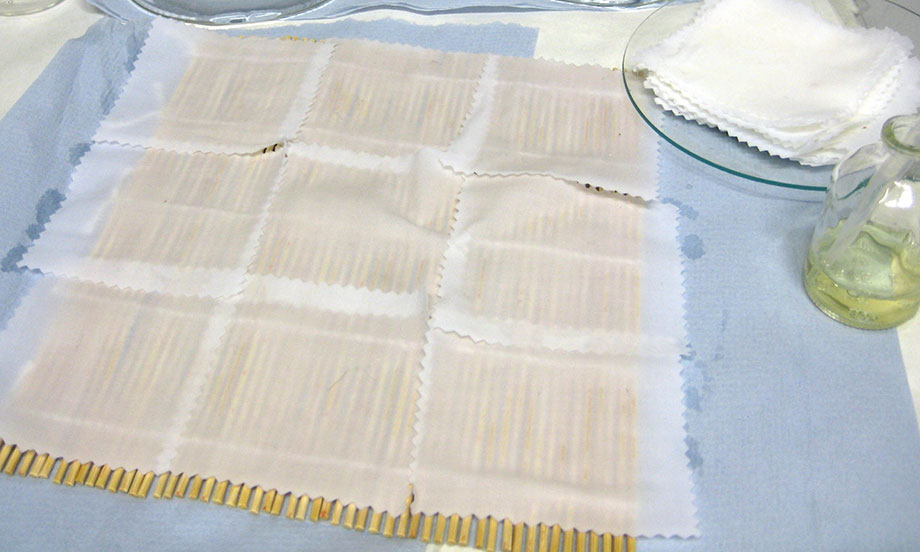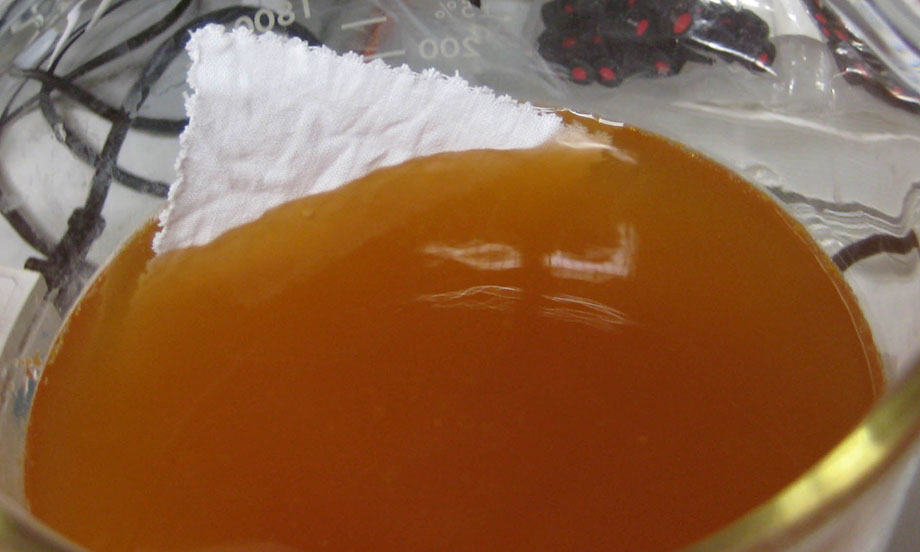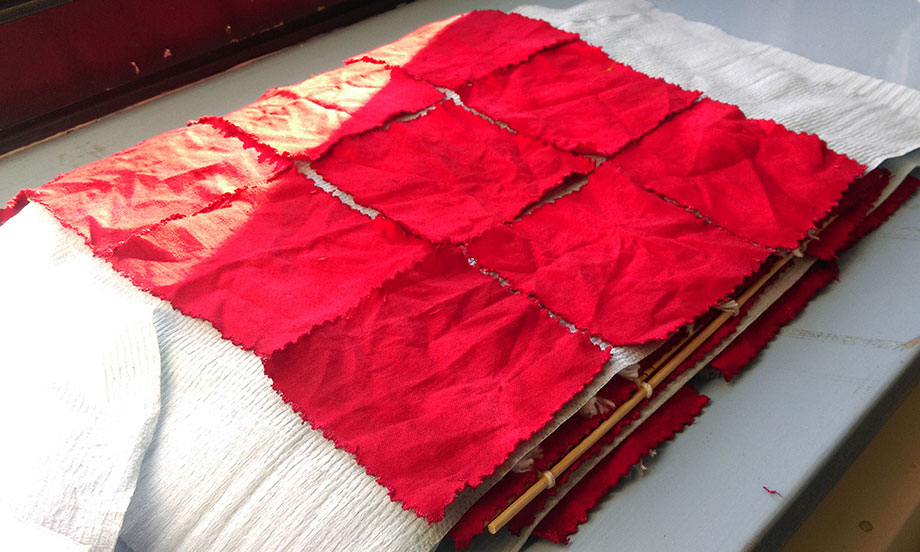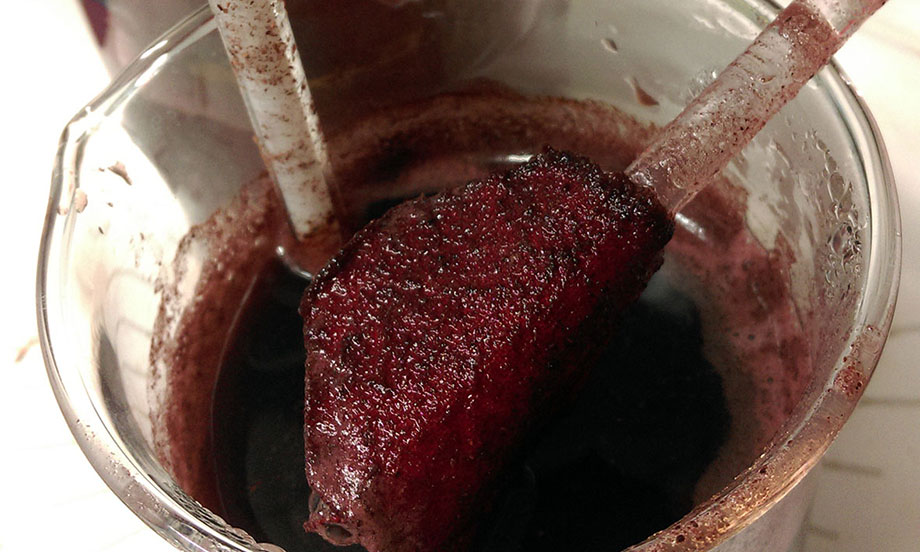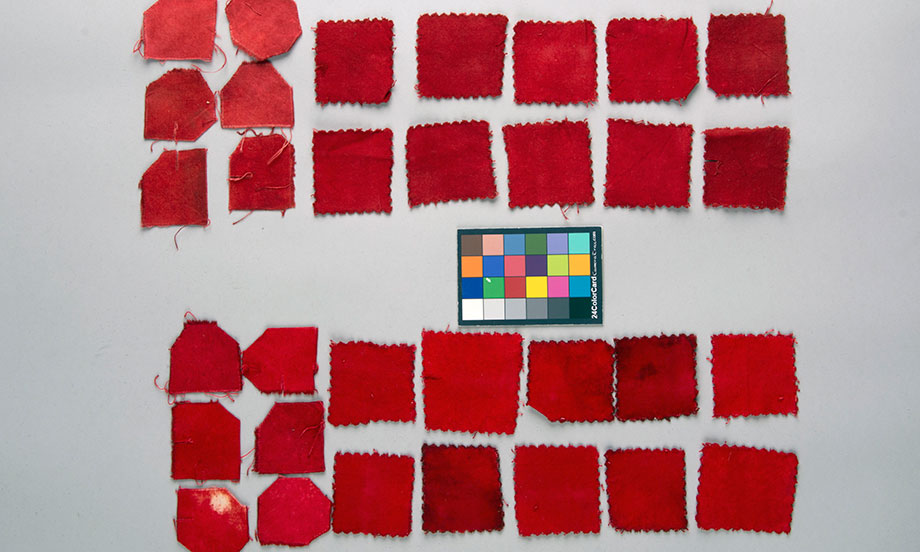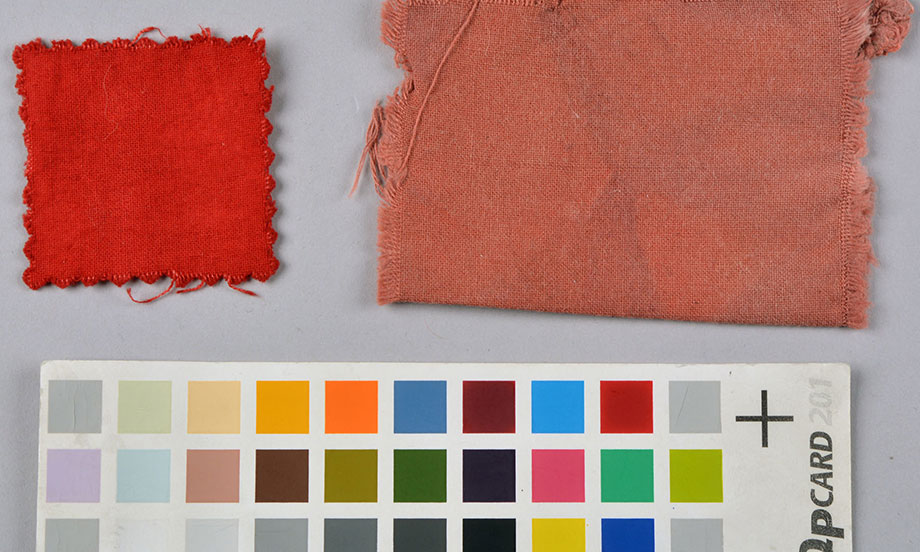Turkey Red
Julie Wertz
Turkey red was once described as ‘the most complicated and tedious operation in the art of dyeing; but it produces the fastest color which is known.’ Although dyed onto cotton fibres, Turkey red is in fact not a dye itself—rather, the result of a prescribed series of treatments that resulted in a brilliant, fiery, and fast red hue.
The process involved weeks of preparation, repeatedly soaking the cotton in a bath of rancid olive oil, alkali, and sheep dung, then drying it (a difficult task in Scottish weather!). Next, the oiled cotton was imbued with aluminum and dried again. Turkey red was dyed in a bath with madder roots that contain the red dye alizarin. The bath also contained chalk, for calcium, and often bullock’s blood, said to improve the final colour.
In 1869, chemists developed a way to create alizarin from coal tar by-products, a more abundant and cheaper source of dye than madder roots. The ‘artificial’ product quickly replaced madder in Turkey red dyeing, substituting one source of alizarin for the other. Advances in the oiling process during the 1870s made it possible to dye Turkey red in around three days, significantly reducing the production time.
The complex and time-consuming process made Turkey red a premium product. In the late-19th century, consumers looking to acquire Turkey red more cheaply were duped into purchasing packets or bottles of early synthetic dyes like Congo Red, which faded quickly, thinking it was Turkey red. Because it is the result of a process rather than a dye, Turkey red cannot exist as a powder or a liquid, only on cellulose (cotton) fibres.
The synthetic dye industry expanded rapidly in the second half of the 1800s, but no new red equaled the fastness of Turkey red. Although the industry used synthetic alizarin, the ¬-molecule is identical to the naturally sourced one and so its fastness was unaffected. Finally, by the 1930s, naphthol red dyes were developed that were fast enough and much quicker to dye. Turkey red production in Scotland ended in 1960.

